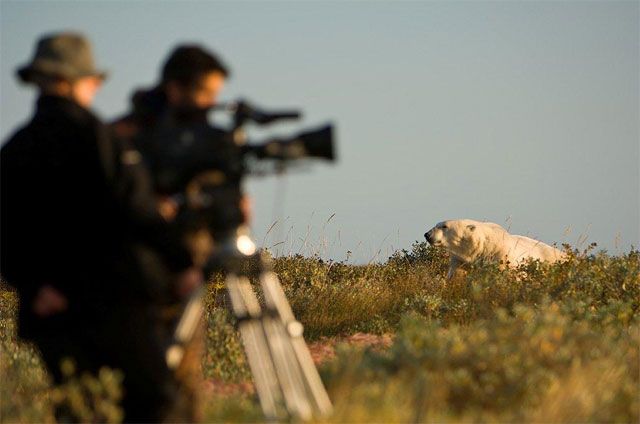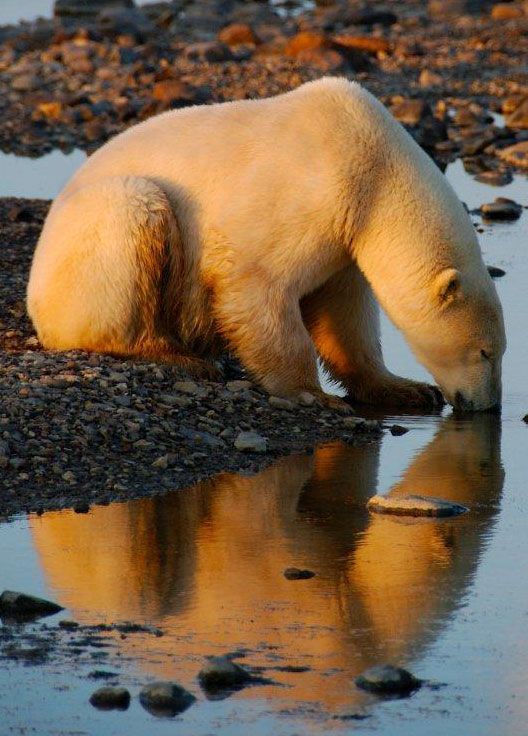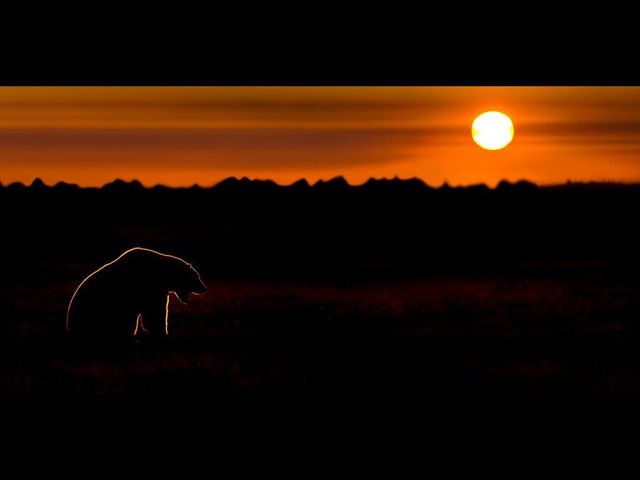Special to Churchill Wild
by +George Williams
If you’ve ever wondered what it’s like to visit the polar bears at Seal River Heritage Lodge or Nanuk Polar Bear Lodge, you’ll want to make sure to watch the world premiere of Polar Bears: A Summer Odyssey on Sunday, April 8 at 7 p.m. on CBC TV’s The Nature of Things with David Suzuki. You’ll see some of our Churchill Wild polar bears!
The wildlife documentary, much of which was filmed over a 12-month period in the vicinity of Churchill Wild’s polar bear lodges, tells the story of a young male polar bear who must survive his first summer alone on land without his mother, after the ice breaks up early on Western Hudson Bay and prevents him from hunting seals. The youngster’s struggle to survive is back-grounded and influenced by one of the most important environmental stories in history: climate change.
Directed by Adam Ravetch of Arctic Bear Productions and produced by Arcadia Content in association with CBC’s Science and Natural History Documentary Unit, Polar Bears: A Summer Odyssey features stunning images shot with eight different types of cameras including: a polar bear collar-cam; a remote control truck-cam; a mini heli-cam and several underwater cameras.
“Filming in 3D was much more work,” said Ravetch. “But we wanted immersive images so the audience could experience what it’s really like to be up close at ground level with polar bears. It required multiple cameras operating at the same time to produce the special 3D effects and three of us including Stereographer Indy Saini and Camera Engineering Specialist Stewart Meyer to get the distances between the objects and between the lenses just right. Stewart also developed a smaller mobile camera system that could produce some very rare images.”
Churchill Wild’s Mike Reimer and polar bear guides Terry Elliot and Andy MacPherson were also essential in getting the ultimate polar bear shots.
“It’s a huge challenge to film in 3D in the arctic,” said Ravetch. “The guides have to have experience specifically with polar bears. They concentrate on safety so we can focus on camera angles and getting the shots we need. Being up close with the bears is quite spectacular for a filmmaker, but safety is paramount. The last thing we want is for a person or a bear to get hurt. You’re not in a cage or a vehicle, you’re at ground level with the polar bears. I’ve always worked at ground level, but there are very few places where you can photograph polar bears like this. Seal River and Nanuk are among the best places on the planet for this type of wildlife photography.”
Ravetch is no stranger the arctic. He and Sarah Robertson co-directed Arctic Tale for National Geographic. Ravetch also directed some amazing in-field sequences swimming with polar bears and walruses for the IMAX production To The Arctic and was cinematographer for one of the segments on the BBC series Frozen Planet, to name just a few of his many illustrious wildlife and nature film credits.
Ravetch sometimes camps out for 4-6 weeks at a time while making his films in the arctic, which makes for a very serious and sometimes dangerous adventure (see full interview here), but Churchill Wild was lucky to have him and his crew as guests at Seal River Heritage Lodge and Nanuk Polar Bear Lodge during various segments of the filming process in 2010 and 2011.
“I woke up to Jeanne’s (Reimer) omelettes every morning,” said Ravetch. “Churchill Wild offers people the very unique experience of getting up close on the ground with the polar bears. Within a day of a arriving at the Lodge people can see polar bears on the tundra. But they still have a warm safe bed at the Lodge to come back to, and of course the delicious food.”
Thanks Adam! And just to clarify for future guests, Churchill Wild doesn’t actually “own” any polar bears.
They simply get close to them.












I have put this date in my calendar and plan to watch this. I love bears, especially the polar bear. I worry so much about the future of these magnificent animal. I am a member of several wildlife clubs, aiming at protecting our bears, and more the polar bear.
I will be coming up to Churchill this fall or next.
Hi Linda! Hope you enjoyed Adam’s documentary on The Nature of Things. We’d love to host you at any of our remote lodges on the Hudson Bay coastline. Just shoot Doreen an e-mail at info@churchillwild.com and we’ll give you all the details. There’s nowhere else in the world that will give you a real Arctic Safari experience with the polar bears. Watch for Adam’s second feature this spring with National Geographic, which I’m told will have footage from the Lodge as well.
Hi Linda! Hope you enjoyed Adam’s documentary on The Nature of Things. We’d love to host you at any of our remote lodges on the Hudson Bay coastline. Just shoot Doreen an e-mail at info@churchillwild.com and we’ll give you all the details. There’s nowhere else in the world that will give you a real Arctic Safari experience with the polar bears. Watch for Adam’s second feature this spring with National Geographic, which I’m told will have footage from the Lodge as well.
I am picking up e-mails just now, as we have been out of town for several weeks. I am so disappointed that we did not get to view the program on CBC. We have the polar bear trip on our “bucket list” and hope to do it soon.
Sorry to hear you couldn’t see the CBC program Rosemary. But we do hope to see you here in the future! Thanks for visiting!